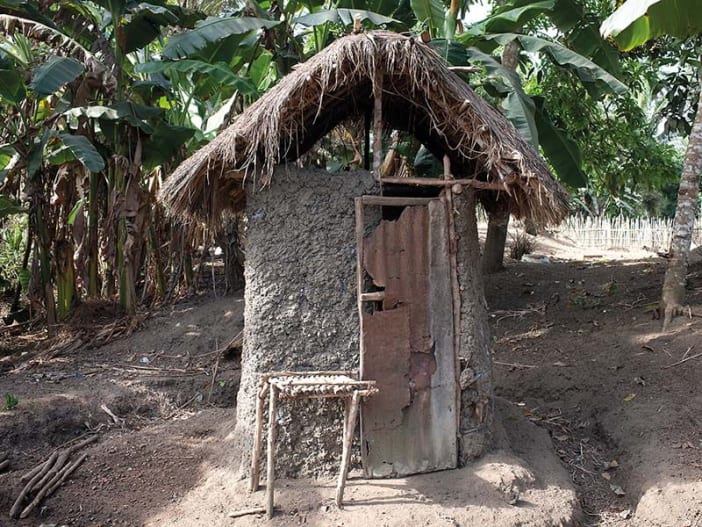Around 2.6 billion people lack access to safe sanitation – more than a third of the world’s population. The Millennium Development Goal (MDG) 7, Target 10, is ‘To halve, by 2015, the proportion of people without access to safe drinking water and sanitation’. This is an ambitious target, but the MDGs have been important in focusing governments and NGOs on key development issues. At the halfway point, achievement of the sanitation element is too slow in 74 countries. At current rates of progress the target is not expected to be met in sub-Saharan Africa until at least 2076! This lack of progress on sanitation and hygiene is likely to have a big impact on other MDG targets such as maternal mortality, access to education, and tackling disease.
Studies by the Overseas Development Institute and Tearfund, as well as the UNDP Human Development Report 2006, have tried to identify the major barriers to improved sanitation. They have suggested some of the steps required if faster progress is going to be made towards the MDG target on sanitation.
Sanitation as a priority There is a certain amount of taboo surrounding sanitation and hygiene, and government officials are less likely to speak out on this than, for example, the need to build new schools. As there is rarely an overall government ministry for sanitation, there are often few sanitation policies and strategies, and where they do exist, they are often poorly implemented. Also, communities do not tend to prioritise sanitation – perhaps due to a lack of education about the consequences of poor sanitation, or because the voices of women, who are most affected by poor sanitation, are not heard.
Links with other sectors While most people see clear links between sanitation and water, people are not always aware of the links between sanitation and other sectors. It is vital that projects and plans in sectors such as health, education and rural or urban development include efforts to improve sanitation.
Capacity There is often a lack of capacity in the sanitation sector – involving local government officials, public health promoters and those who design and construct suitable latrines. Capacity needs to be developed at all levels, and this will require more funding than is currently made available.
Behaviour change Some sanitation projects have been unsuccessful because they have been based on a poor understanding of what influences the behaviour change that is needed to ensure good sanitation. Research suggests that the provision of subsidised latrines does not often result in improved sanitation and hygiene. On the other hand, investment in community mobilisation and education has produced better results. This has encouraged people to want latrines and to improve hygiene practices.
MDG limitations
While it is always good to have a clear goal in sight, we should be aware of the limitations of this particular MDG target on improving access to sanitation and water supplies. Consider, for example, the following issues:
Coverage and quality The MDG target measures coverage (the proportion of households with access to sanitation) but does not consider the quality of these sanitation facilities. Broken or poorly-functioning ‘improved pit latrines’ are included in coverage statistics, but they bring huge public health risks for families and communities. In addition, what people want is often different from the technologies that governments and NGOs supply, leading to the presence of sanitation facilities that are unused.
Integrated water, sanitation and hygiene It is important that improved access to sanitation is accompanied by hygiene and health education. However, the MDG target does not measure increases in knowledge and good practice related to personal hygiene. Clean water, safe removal of excreta, and personal hygiene are three key elements of any strategy to improve public health. They must remain integrated.
Community level partnerships The MDG target measures sanitation improvement at household level, but it does not take account of the need for community-wide sanitation. Although successful sanitation programmes depend on changes in practice at household level, the public health benefits of installing one household latrine are unlikely to be achieved unless other households also have latrines. Installing a latrine in one household does not provide protection against the excreta of other households that do not have access to a latrine. In addition, community-based interventions tend to be more successful in bringing about lasting behaviour change and measurable health benefits than initiatives aimed at individual households. This is because communities that are educated together tend to act together and create a culture of good sanitation. The UN Human Development Report 2006 suggests that community level interventions require partnerships between communities and their local governments who carry out work under a national sanitation strategy.
Environmental issues Safe sanitation is not just about increasing the coverage of latrines. It is also about protecting the environment. If sanitation improvements do not reduce contamination of a groundwater supply or agricultural land, or if the chosen sanitation approach results in the environment being exposed to untreated sewage, there is an increased risk of poor health. Sanitation approaches must safeguard the environment and its limited natural resources, such as sources of groundwater and surface water.
Frank Greaves is Tearfund’s Programme Development Advisor for Water and Sanitation. Email: [email protected] Laura Webster is Tearfund’s Senior Public Policy Advisor for Water and Sanitation. Email: [email protected]









